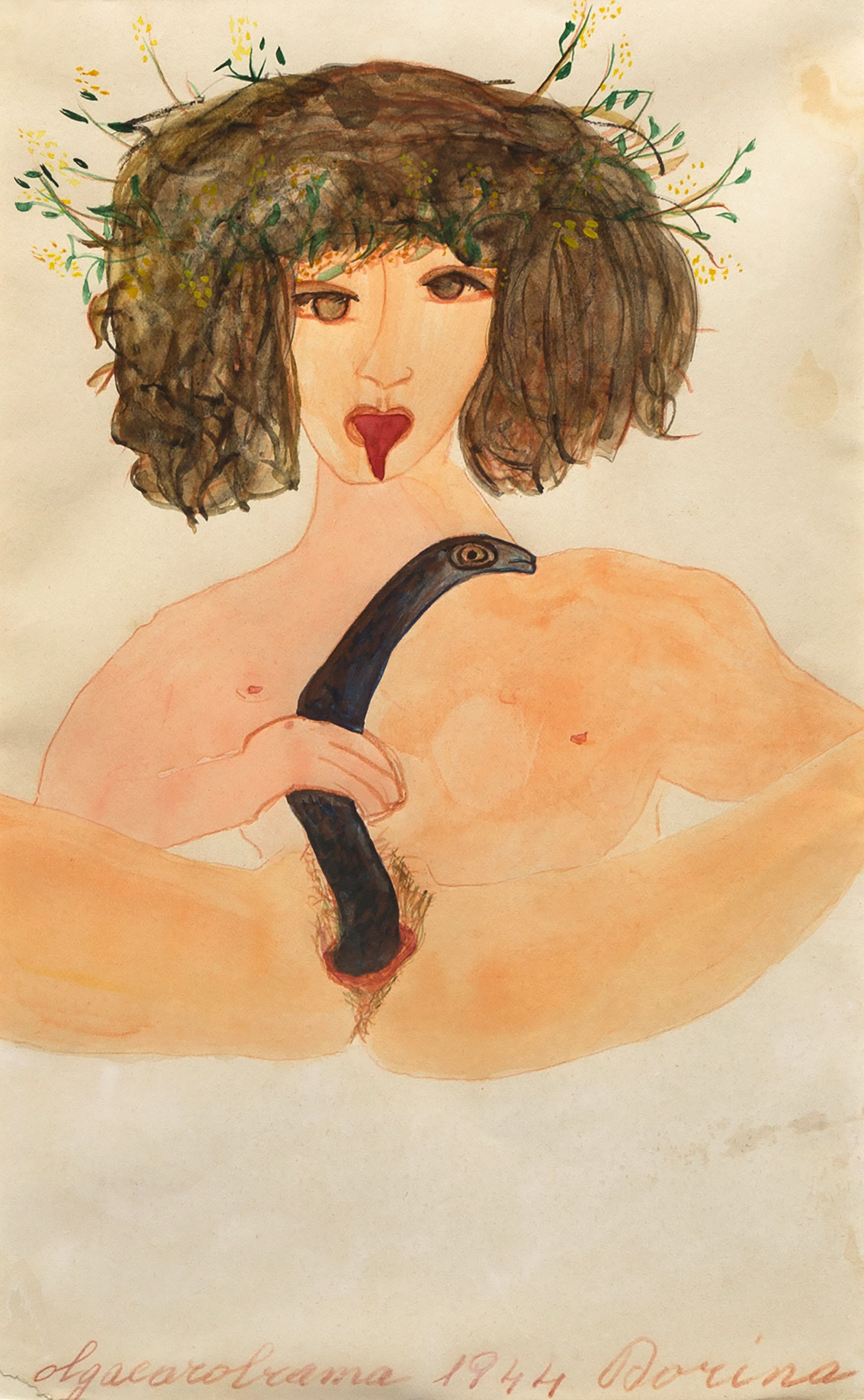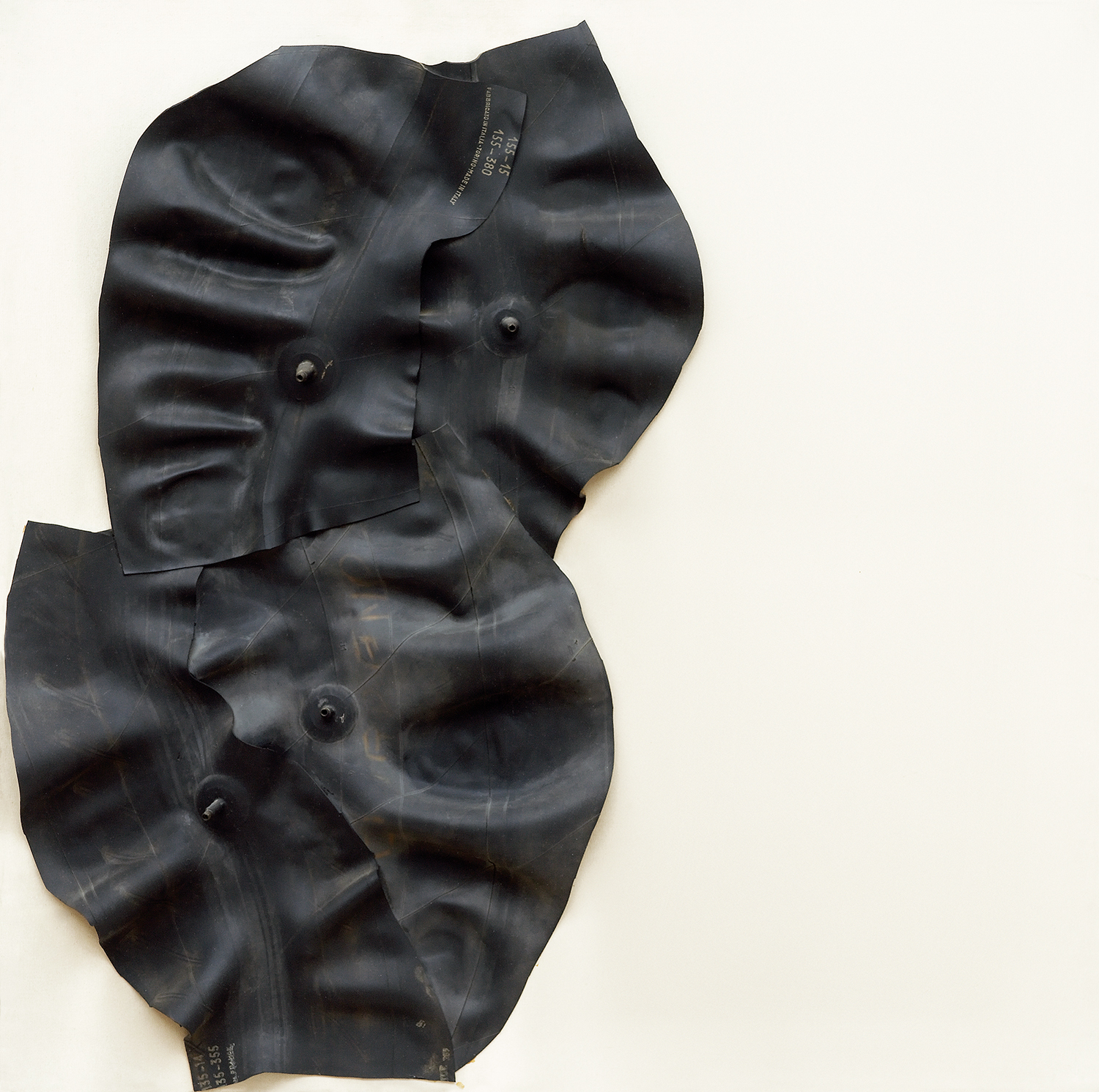Purple Magazine
— F/W 2015 issue 24
Carol Rama
 Dorina, 1944, watercolor on paper, 24 x 15 cm, private collection
Dorina, 1944, watercolor on paper, 24 x 15 cm, private collection
the passion according to Carol Rama
text by ANNE DRESSEN
All artworks copyright Archivio Carol Rama, Turin — Special thanks to the Musée d’Art Moderne de la Ville de Paris
If we take Man Ray’s word for it — and he knew her well — Carol Rama, that major but long-ignored Italian artist, had at least seven different faces: a diversity of facets that her recent retrospective at Paris’s Musée d’Art Moderne sought to reveal.
 Autorattristatrice #10 [Play on words between author-auto-portraitist-auto-depressing #10], 1970, rubber collage on canvas, 100 x 100 cm, courtesy of Galerie Isabella Bortolozzi, Berlin, copyright photo Andy Keate
Autorattristatrice #10 [Play on words between author-auto-portraitist-auto-depressing #10], 1970, rubber collage on canvas, 100 x 100 cm, courtesy of Galerie Isabella Bortolozzi, Berlin, copyright photo Andy Keate
Born in 1918 in Turin, where at the age of 97 she still lives, Rama remains what is known as an “artist’s artist.” Lauded…
-

Presagi di Birnam [Omens of Birnam], 1970, bicycle inner tubes on iron stand, 180 x 122 x 60 cm, Museo del Novecento, Milan, copyright Comune di Milano, all rights reserved
-

Appassionata [Passionate], 1943, watercolor on paper, 23 x 18 cm, private collection, Turin, copyright photo Roberto Goffi, Turin
-

Untitled, 1944, watercolor on paper, 30 x 20 cm, private collection, copyright photo Andy Keate
-

Il Chiodo di Corrado [Corrado’s Leather Jacket], 1992, rubber over leather jacket, 90 x 60 x 10 cm, private collection, copyright photo Paolo Vandrasch